Meet iii-resident Pelle Schilling
Pelle Schilling is an artist operating somewhere between art and physics, highlighting natural phenomena that catch his short attention span. I caught up with him over Skype, getting a glimpse into his Amsterdam studio.
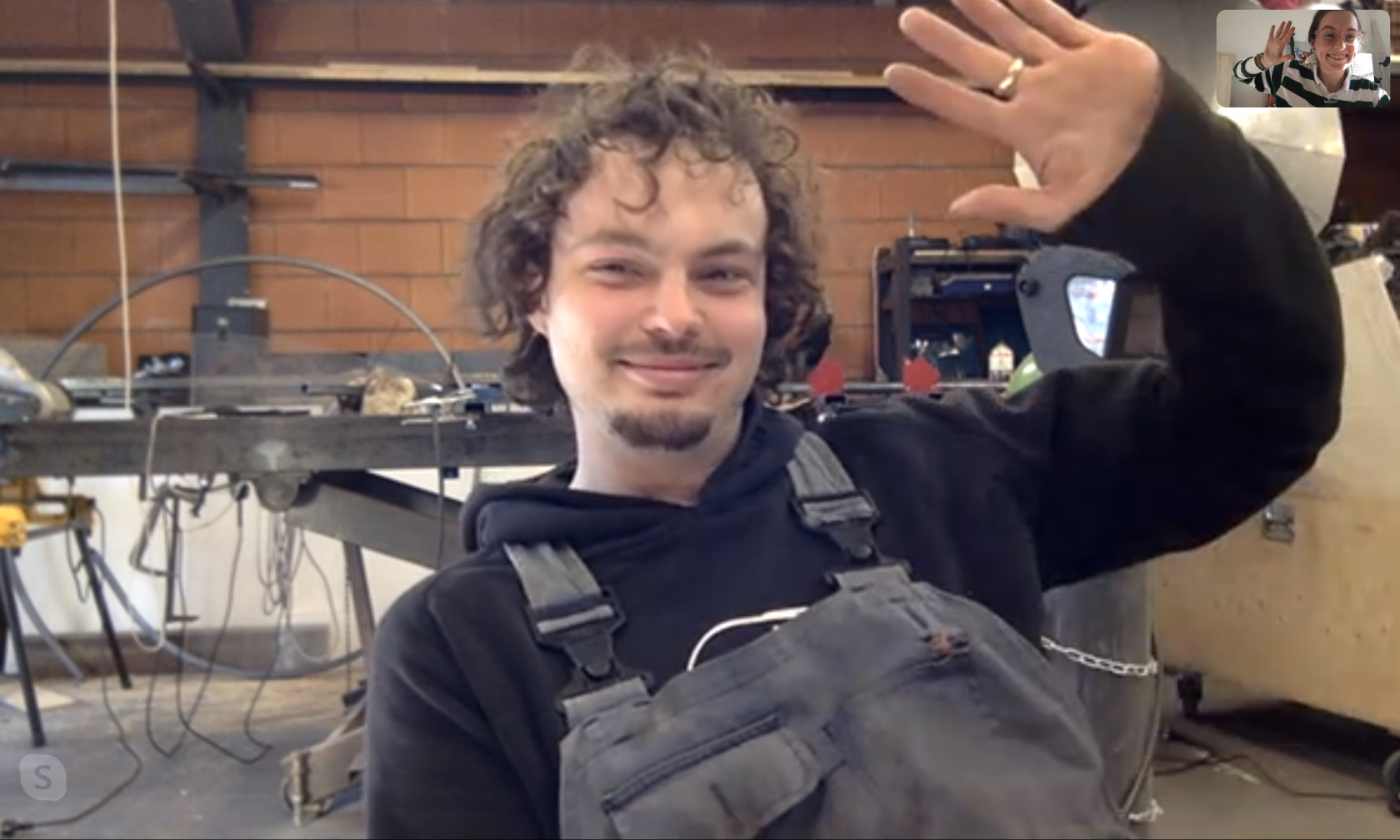
Cathleen Owens: Briefly, how would you define your practice?
Pelle Schilling: I’m in a space between science, physics, and art. I tend to walk around the world, looking at everything. Sometimes I find that something that triggers me and I ask myself what is happening or how it’s happening. If I find something interesting enough, I start playing with it, manipulating it. I’ll typically try to make it bigger or amplify the thing I found interesting in the first place.
Until now, that interesting thing I focus on has always been moving. It’s always been kinetic. I’m interested in the balance between having my own influence on matter and letting it behave completely untouched. It’s so very important to me that the matter itself keeps its original properties, leaving some things to chance. A balance between beauty and unpredictability.
I am such a stereotypical millennial. I have no attention span whatsoever. I really like art where there is something continuously changing. I tend to lose my attention if it’s too static. An artwork is done right if I can look at it for more than 15 minutes.
You call yourself a kinetic installation artist. To me, by calling yourself that, you’re implying that the work moves and it’s immersive. What does being a “kinetic installation artist” mean to you?
At least until now, everything I’ve made moves. Movement is the thing that catches my attention. Immersiveness is a huge part of my practice as well. I love it if it’s an experience, not just a thing– something you can feel, become a part of. What’s important to me is that it’s physical, not a projection but right there, in the space. Something real.
For example, with computer animated things, I don’t understand computers well enough to understand what’s happening when there is a projection or something. When something is projected or on a screen, I really tend to think, “Well, it’s done by a computer. Not so interesting.” When it’s happening in our physical world then it triggers many more questions. Then I really want to understand the physics behind it.
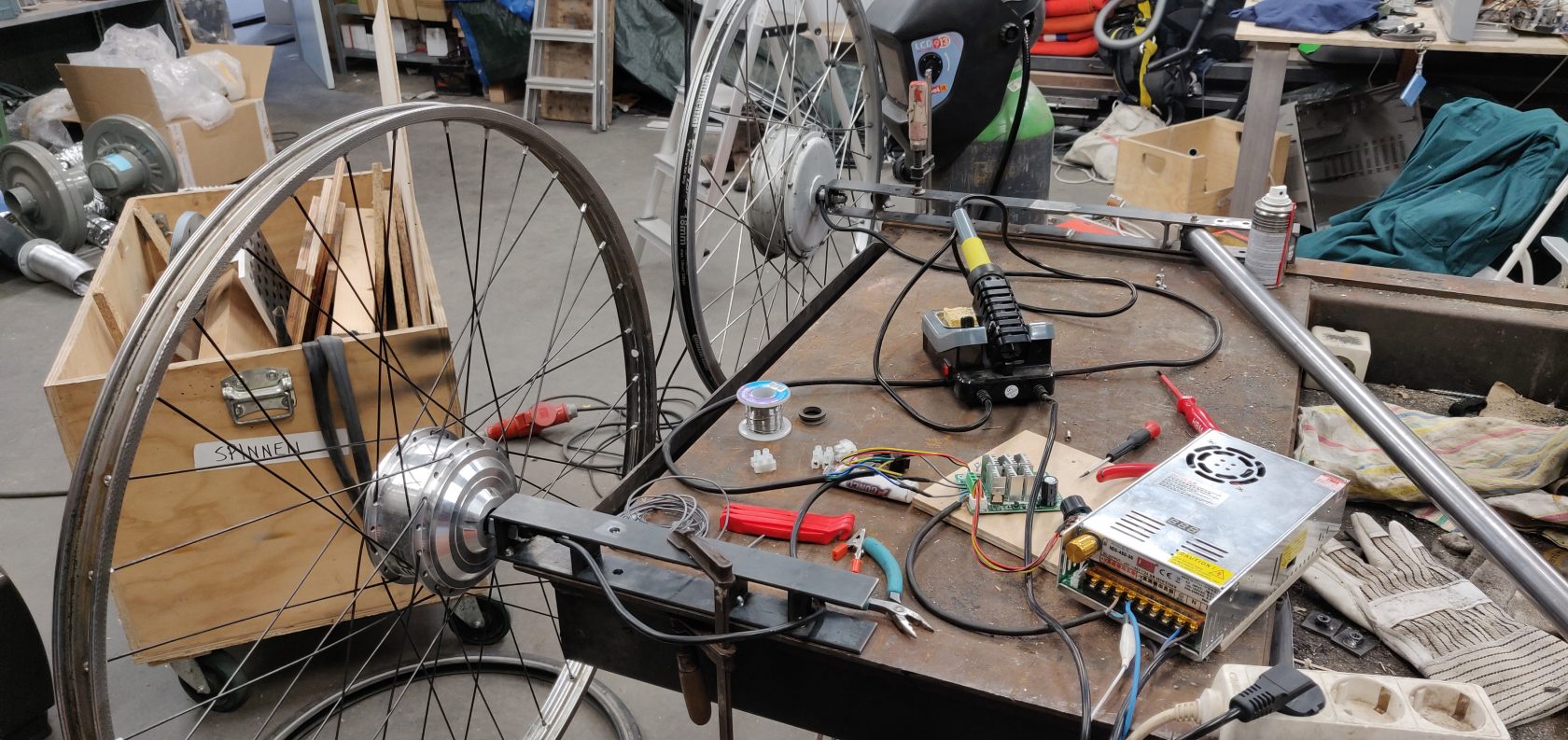
It’s been interesting for me getting to know your work online, when a large part of your work is the in-person experience. Have you thought more about the documentation of your work?
The work is meant to be seen in person but yeah, documentation is something I need to work on.
What role does funding play in your practice?
I put my own money into my graduation work. Since graduation, most of the things I built were funded. I’m actually putting in my first application into AFK for Into The Great Wide Open. They asked me to make a plan for an artwork. But when I do an exhibition with my work “Rain”, that makes money. So initially that was a big investment but it’s been paying off. It is still paying off.
I think that’s interesting. It’s straddling this line between entertainment and art.
I think with size, people understand that it costs money to make so they are more willing to pay since they understand it’s a hassle to build it up and run it. It’s a production. They understand there needs to be a bit of a budget.
Was becoming an artist a natural path for you?
Not quite. In high school, I never felt like I was very creative. My dad owns an interior construction company and I have been working there since I was 9 or 10. My mom was a graphic designer, making posters. Now she’s more in the fine art world. So I was definitely surrounded by creativity but I never really realized it. When I was done with high school, I was confused. In my gap year, I worked at my dad’s company. I didn’t want to do a theoretical study. I like working with my hands. Eventually I found Product Design at the HKU. In the first two years, I always kept the functional element in it. In my third year, I interned for Zoro Feigl. There I first saw how much fun it was to just let function go and just completely play with aesthetics. For the first time, art made complete sense to me.
Studying product design, how did you wind up with your graduation project? And what has changed for you since graduation?
In the first year of studying at the HKU, I went to the graduation exhibition. There is so much artwork. Too much. People that visit these shows will remember 3 projects. The first one being the one they came for, for the person they know and then there are two others, wildcards.
In the first and the second year, and the beginning of the third, I was fascinated by this idea of creating something that would be remembered by everyone. I started asking myself questions about where my attention goes. I noticed that in these big places where there is so much information, like Dutch Design Week, I’m concentrated for the first hour and I can look at everything. After that, my brain is full. When I’m full, I avoid looking at anything where I have to read to understand. But if there is something moving, then I’m much more keen to look at it.
In the Product Design department at the HKU, the rule was everything is a product as long as you can defend why you’re making it. A film is a product, a poster is a product, and an artwork is a product. It was really open in that sense.
This is my second year since graduation. I’ve always had at least one thing on the calendar since graduating and that’s really helped. I’ve kept busy. Deadlines are nice. They really help me.
You mentioned you interned for Zoro Feigl. How did that experience change your art practice?
I worked with Zoro for 5 months. It felt really natural. I still talk to him on a weekly basis. He’s my mentor but now we’re also colleagues and we do stuff together, which is amazing. When I started my internship with Zoro and it was so much fun, everything clicked.
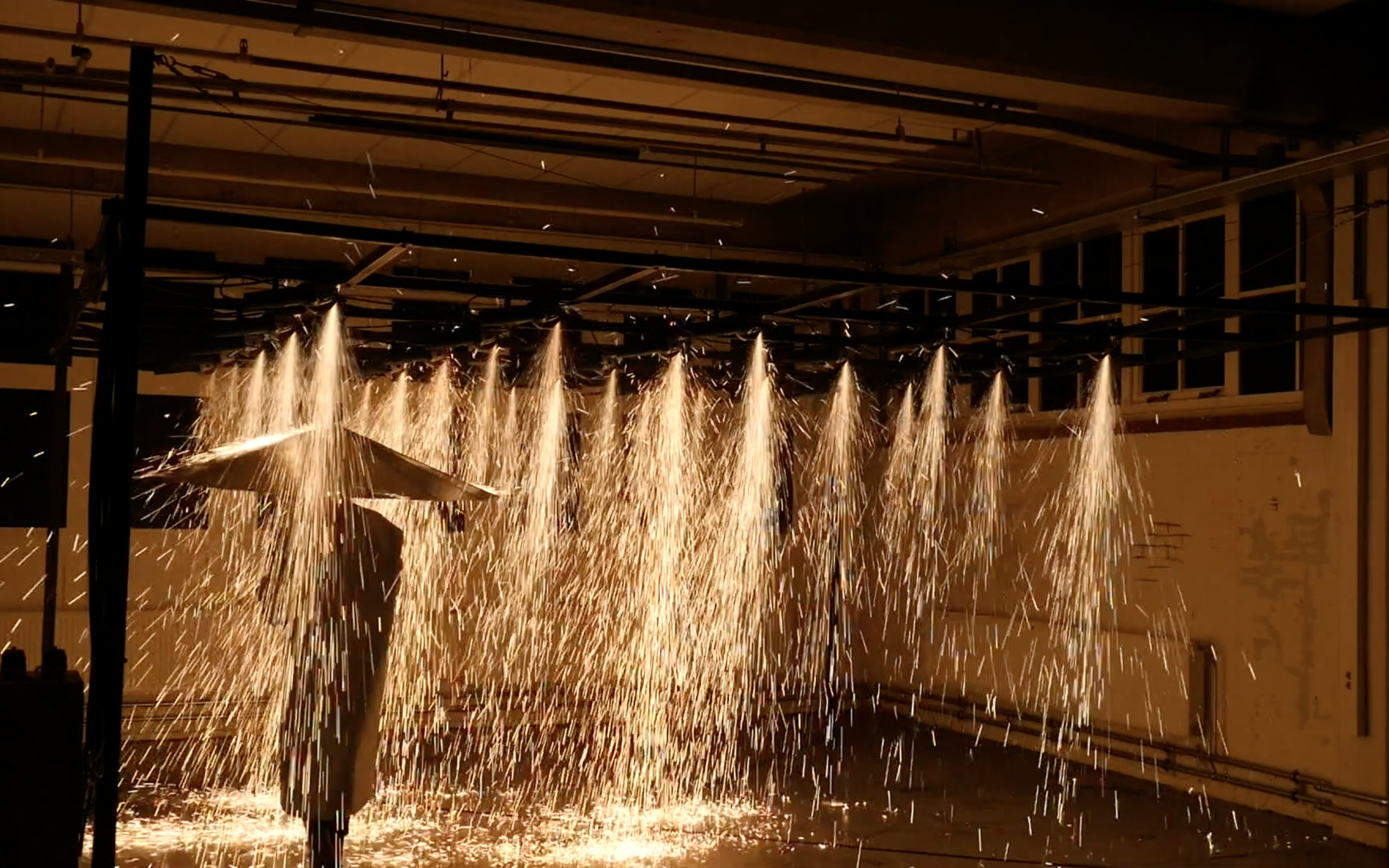
Where do your ideas originate from? Does it start with a material, or does it start with an experience?
Most of the time it starts with just seeing something. That could be on the internet or while on a walk or on my bike. The work with the fluids “Flow” started with just pouring milk in tea. My graduation work came from my fascination with the workshop. But what I’m working on now for iii is a combination of YouTube and an old physics class I had in high school.
“Rain” came from watching angle grinders. That popped into my head as an idea. I thought of it during my internship. I knew I wanted to do something with the sparks in the metal workshop then one day I saw Zoro with an angle grinder close to the ground. The sparks were bouncing up from the ground and I thought it looked exactly like when it’s raining really hard in a Hollywood movie.
Do you think you can create conditions to have more of these happy accidents, these moments of inspiration or do they just come to you when they come to you?
I think they just come. I don’t know if I could create the conditions. Again for my work for iii, I already knew about gyroscopes for a bit and I thought it would be interesting to work with. Then one night I had a few too many beers and woke up hungover in bed. I watched a lecture from the 90s about gyroscopes on YouTube, given by this professor with wild hair from MIT. I just watched that hungover in my bed in the morning. That’s how that started. I don’t think I could fabricate these ideas from thin air.
Do you have a dedicated studio practice?
Yeah, I do. But it depends. I also do different stuff. A friend and I just built a sound system. We also build stuff for other people to make some money. So we are here a lot. Sometimes you are here at like 3am, making random stuff. We have our own playground but it’s not very well organized or structured.
I do a lot of productive procrastination to keep the mind turning. Back in high school, I was really good at doing nothing but somewhere along the way I forgot how to do that. I need to stay busy. Otherwise, I get very unhappy with myself.
You want to give a feeling of astonishment to your audience. What about after that astonishment? What would like to happen after that?
One thing I would like to happen is to not only have the audience look at my art piece with astonishment, but to look around the world at large with this same feeling. To continue this feeling of amazement.
I don’t try to make big statements. I don’t feel like I’m the person to do that. Maybe I will learn how to do that in a later phase. Now I feel like I shouldn’t do that because I wouldn’t be very good at it. I’m good at the physics and the making.
A few times, while watching short clips of your works, I’ve had the impulse to turn the sound down. How important is the sound accompanying the experience?
My work works a lot better in real life than on video, for sure. But it depends on the piece. For my installation “Rain”, sound is very important. The burned metal smell is important as well. All the senses add up to the total experience. Sound is a very interesting aspect, and you can do a lot with it but until now, I haven’t put too much thought or attention into it. I would like to focus more on sound in the future.
Even through the computer screen, I was mesmerized by “Flow”. It completely sucks you in. This work seems more ready to buy, in a way, more art market-friendly than previous works. It’s easy to hang on a wall and it’s not overpowering. Was that an intentional choice?
Well, I knew this would be a much better fit in the contemporary art scene. I did feel like it was a good moment to show that I can work on this level as well. I mean, my fascination still was genuine, just scaled down. It was also just due to the budget. I didn’t have a huge production budget. Now I’ve been asked to make a work for Into The Great Wide Open, and because I have a larger budget, I’d like to scale this work up, adding stroboscopic lights.
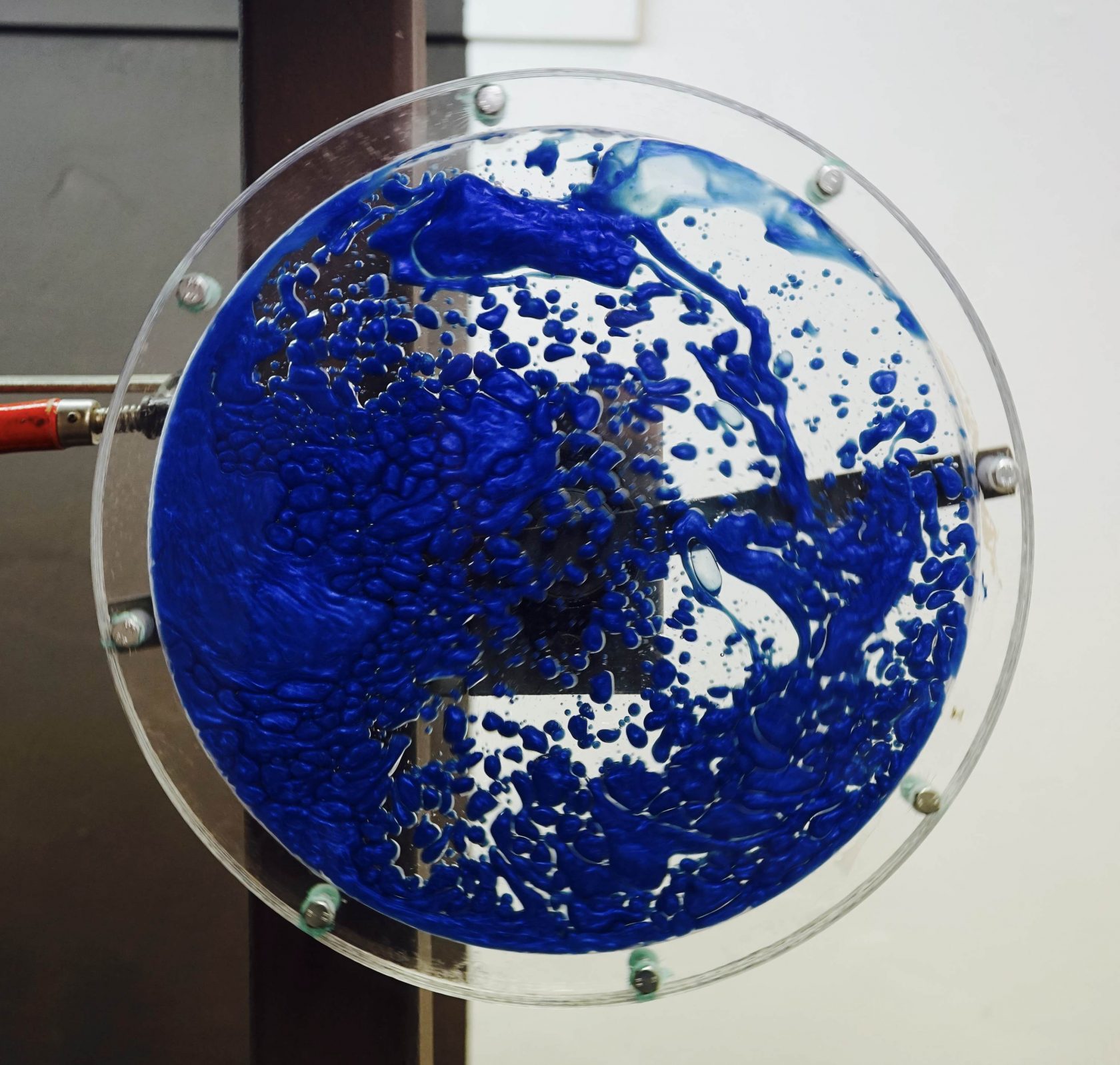

What were you planning on making at iii and has that plan changed?
The production plan hasn’t changed. As I mentioned earlier, I’m working with the physics surrounding gyroscopes. This work is very different from “Rain” and “Flow” but it’s been very interesting to play with. It feels like I’m making an instrument made out of floating wheels in a way. I’m setting the conditions to have them interact on their own terms, trying to manipulate it or put it in a different context but at the same time, giving the phenomenon itself some space to do its own thing and be unpredictable. I’m letting the wheels have their own fun. If I know exactly what is going to happen in my artwork, it loses its appeal. When it does it’s own thing, I can keep looking at it, like a campfire. You set up, build the fire and you let the fire go. It’s continuous and you know it’s changing but you can’t predict the exact change.
On a social level, I am missing some parts of the residency. We are Skyping regularly but we’re not in the same physical space with one another. Production wise, being in my own studio actually works better for me. I know my equipment better. The production time would have been slower in The Hague.

What artists do you look for for inspiration?
Zoro Feigl, Philip Vermeulen, Mischa Daams, Oscar Peters, Leon de Bruijne and Bart Schalekamp, who graduated with me at the HKU.
It’s funny because after I did this internship with Zoro, I became a part of this big family of old Zoro interns. I really feel in The Netherlands, there’s a thriving scene, a movement of these kinetic installations and artists.
Do you think that social media and its effect on our attention span has something to do with the forming of that group?
For me personally, it’s not necessarily because of social media but I do have a short attention span and the works we all make are made for people with short attention spans. I think all the guys who are doing this, they all have a fast paced mind. There is more doing and making, less sitting and thinking. There is a high entertainment value to the works we make. It’s less of the deeply thought about work and more on the physical level.
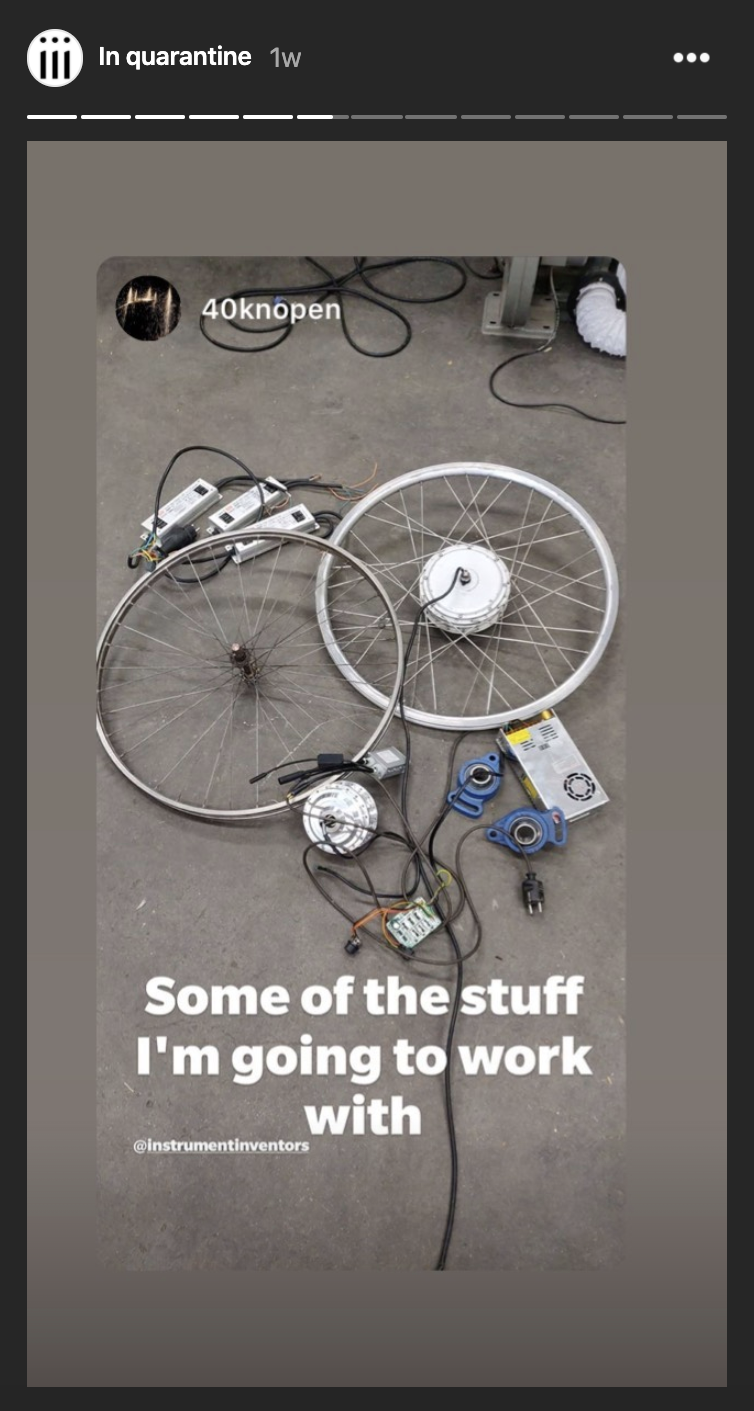
The kinetic art scene seems to be thriving in the Netherlands. Do you think there’s something in Dutch culture that lends itself to that?
It’s a good question. Is it really true that it’s just in the Netherlands? Or is this also happening in other places in the world and we just don’t know about it? One of the reasons it could be blossoming in the Netherlands is because the Dutch festival world likes to put art into the program. All these immersive works are well made for festivals. The contemporary art scene is becoming a bit more lenient and open as well. A while back, if you made a piece of art for a festival, people thought you weren’t serious and that you were selling out. Now it’s more widely accepted to show art at a festival like Down the Rabbit Hole one weekend and then show at a museum or gallery space the next weekend.
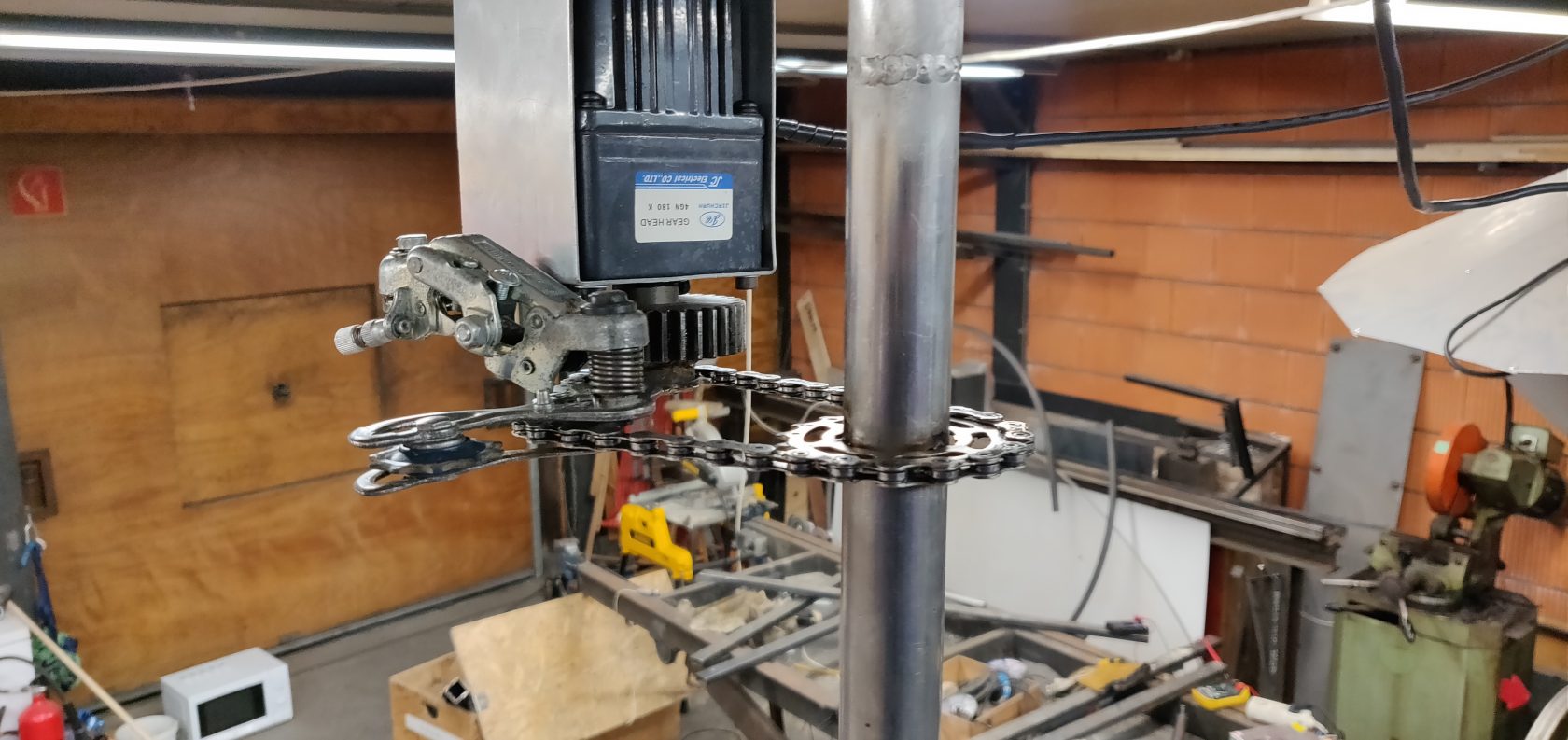
Pelle Schilling will perform at iii workspace in The Hague on April 4. The event will be documented.
The planned original public event No Patent Pending #39 with Jesus Canuto Iglesias, Pelle Schilling, Gabriela-Prochazka, and Joana Chicau is postponed until further notice. Check out the website for the latest info.